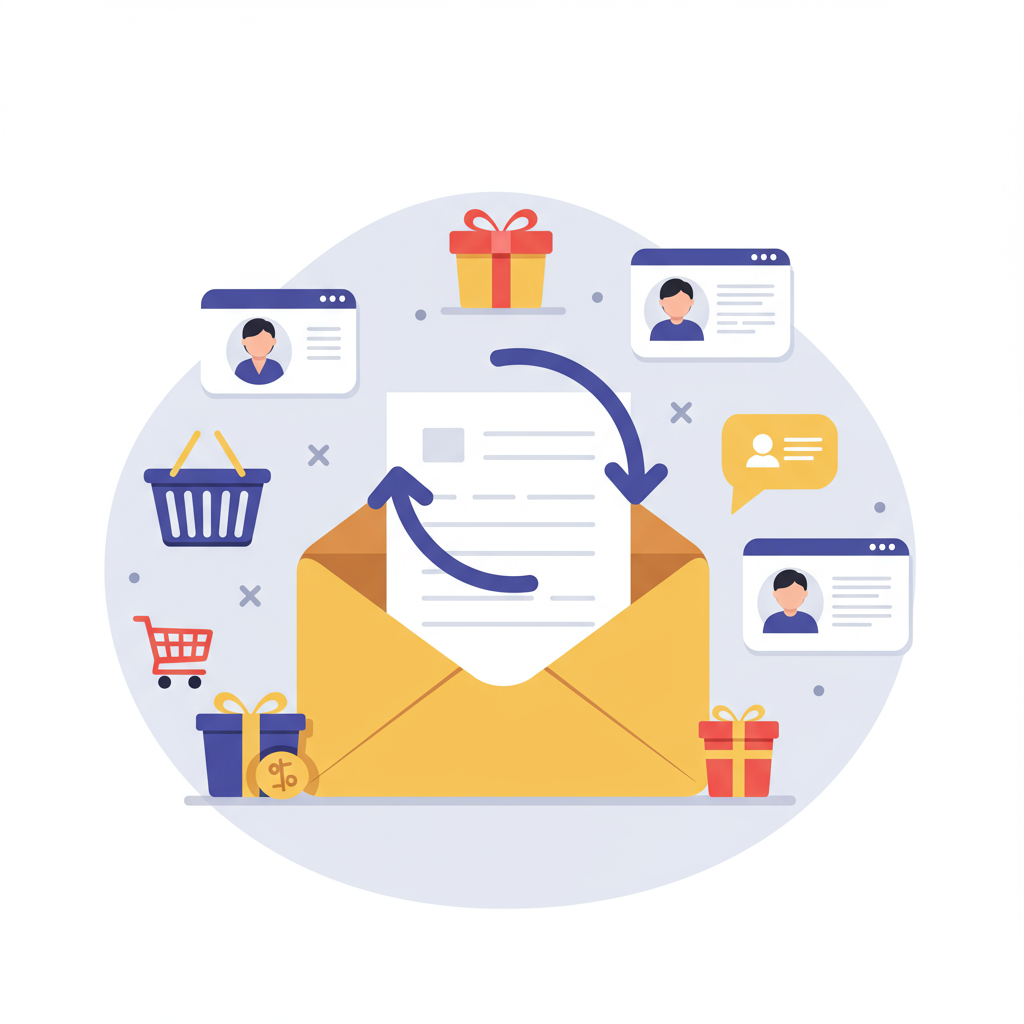Unlock the Power of Automated Emails to Grow Your E-commerce Business
As a Shopify merchant, you’re constantly looking for ways to connect with your customers, drive sales, and build lasting relationships. One of the most powerful, yet often underutilized, tools at your disposal is email marketing automation.
I’m here to share my insights and best practices on how you can leverage email automation to transform your Shopify store’s performance. It’s not just about sending emails; it’s about sending the *right* emails at the *right* time.
Think of email automation as your tireless sales assistant, working 24/7 to engage customers, recover lost sales, and nurture leads, all while you focus on other aspects of your business.
The beauty of automation lies in its ability to personalize interactions at scale. You can segment your audience and trigger specific messages based on their behavior, preferences, and purchase history.
Let’s dive into the core benefits. First, it’s a massive time-saver. Once set up, these flows run automatically, freeing you from manual outreach.
Second, it significantly boosts conversion rates. Automated emails, especially those triggered by specific actions like abandoned carts, have incredibly high open and click-through rates.
Third, it fosters customer loyalty. By consistently providing value and relevant offers, you build stronger relationships, encouraging repeat purchases and brand advocacy.
Now, let’s explore the essential email automation flows every Shopify merchant should implement. These are the workhorses of your email marketing strategy.
**The Welcome Series:** This is your first impression with a new subscriber or customer. It’s crucial. For new subscribers, it should introduce your brand, highlight your unique selling propositions, and offer a small incentive.
For first-time buyers, the welcome series can be a thank you, an introduction to product care, or an invitation to join your community. Make it warm and inviting.
**Abandoned Cart Recovery:** This is arguably the most impactful automation. Customers add items to their cart but don’t complete the purchase. Your goal is to gently remind them and overcome any hesitations.
A typical abandoned cart flow includes 2-3 emails. The first, sent within an hour, is a simple reminder. The second, after 24 hours, might include social proof or FAQs.
The third, after 48-72 hours, could offer a small discount or free shipping to seal the deal. Remember, timing is everything here.
**Browse Abandonment:** Similar to abandoned carts, but for customers who viewed products without adding them to a cart. This flow reminds them of items they showed interest in.
This series is excellent for re-engaging potential customers who are still in the consideration phase. Personalize it with the exact products they viewed.
**Post-Purchase Follow-up:** Don’t let the relationship end after the sale. This series is vital for customer retention and encouraging repeat business.
It can include order confirmations, shipping updates, thank-you notes, product care instructions, and most importantly, requests for reviews.
Later in the series, you can introduce complementary products (cross-sells) or higher-value items (upsells) based on their purchase history.
**Win-Back Campaigns:** Customers sometimes go dormant. A win-back series aims to re-engage them before they’re lost forever.
These emails might offer a special discount, showcase new products, or simply ask for feedback on why they haven’t purchased recently.
**Birthday/Anniversary Emails:** A delightful way to make customers feel special. A personalized discount or gift on their special day can significantly boost loyalty and sales.
**Customer Segmentation & Personalization:** Beyond these flows, the true power of automation comes from segmenting your audience. Don’t treat all customers the same.
Segment by purchase history (e.g., VIPs, one-time buyers), product interests, engagement level, or even demographics. This allows for hyper-targeted messaging.
**Choosing the Right ESP:** Shopify integrates with many excellent Email Service Providers like Klaviyo, Mailchimp, Omnisend, and ActiveCampaign. Research which one best fits your budget and feature needs.
**A/B Testing is Crucial:** Always test your subject lines, email content, calls to action, and even send times. Small tweaks can lead to significant improvements.
**Analyze and Optimize:** Regularly review your automation flow performance. Look at open rates, click-through rates, conversion rates, and unsubscribe rates. Use this data to refine your strategy.
**Mobile Optimization:** A vast majority of emails are opened on mobile devices. Ensure your emails are responsive and look great on any screen size.
**Clear Calls to Action (CTAs):** Make it incredibly easy for your customers to know what you want them to do next. Use prominent buttons and clear, concise language.
**Compliance:** Always be mindful of email marketing regulations like GDPR and CAN-SPAM. Ensure you have proper consent and an easy unsubscribe option.
What do you think about these strategies? Have you implemented any of these, and what were your results? I’d love to hear your thoughts.
In conclusion, email marketing automation isn’t just a nice-to-have; it’s a fundamental pillar of a successful Shopify store. By implementing these best practices, you’ll build stronger customer relationships, recover lost sales, and ultimately, drive sustainable growth for your business.
Start small, perhaps with an abandoned cart flow, and then gradually expand your automation efforts. The return on investment is truly remarkable.






